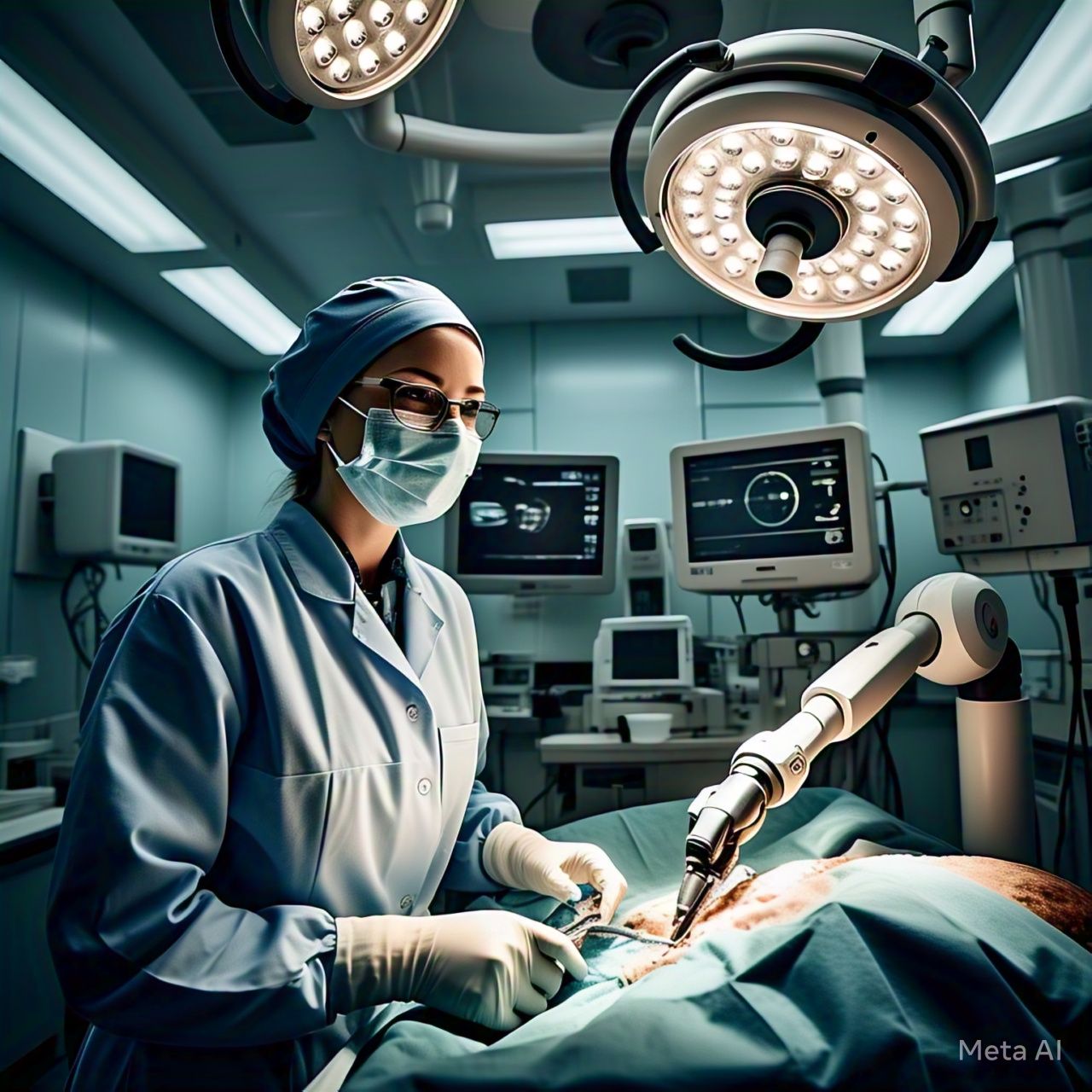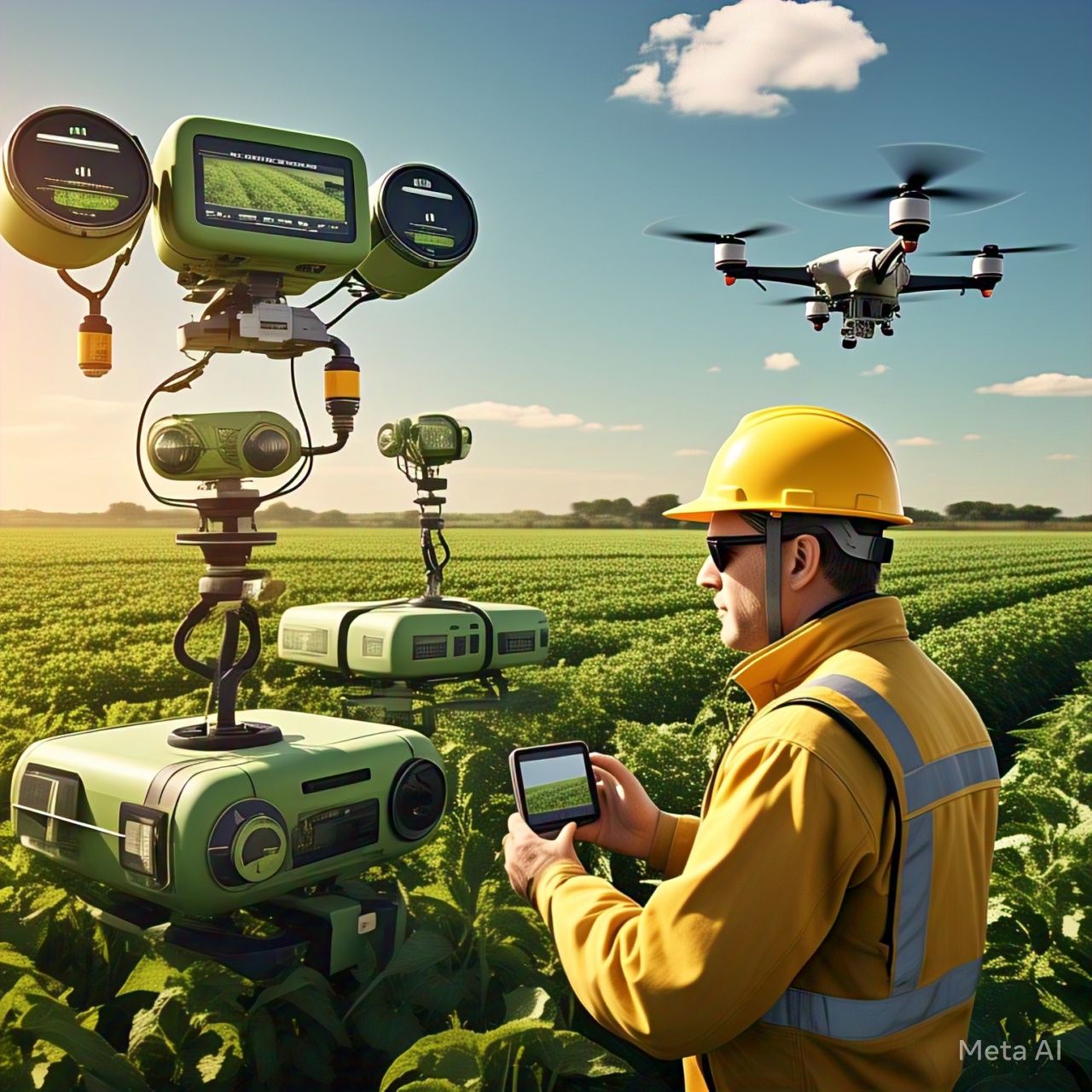Table of Contents
- Introduction
- The Evolution of AI in Surgery
- How AI-Powered Robotic Surgeons Work
- Key Benefits of Robotic Surgery
- Challenges and Ethical Concerns
- Real-World Applications of AI in Surgery
- The Future of AI in Surgical Procedures
- Conclusion
- FAQs
Introduction
Artificial Intelligence (AI) and robotics are transforming modern surgery, making procedures more precise, efficient, and minimally invasive. AI-powered robotic surgeons assist human doctors in performing complex operations with greater accuracy and reduced risks. From robotic-assisted knee replacements to delicate neurosurgeries, AI is reshaping the surgical landscape. This article explores how robotic surgeons are revolutionizing the operating room, their benefits, challenges, and future prospects.
The Evolution of AI in Surgery
The concept of robotic-assisted surgery dates back to the 1980s, but significant advancements in AI and machine learning have propelled it into mainstream healthcare. Some key milestones include:
- 1985: The first robotic surgical procedure using the PUMA 560 robot.
- 2000: FDA approval of the da Vinci Surgical System, revolutionizing minimally invasive surgery.
- 2010s-Present: AI-driven robotic systems enhance precision, automate surgical steps, and improve patient outcomes.
Today, AI-powered robots assist in multiple specialties, including cardiology, orthopedics, and neurosurgery, marking a new era of intelligent, data-driven surgery.
How AI-Powered Robotic Surgeons Work
Robotic surgeons integrate AI, machine learning, and real-time data analytics to assist surgeons in various ways:
1. Pre-Surgical Planning
- AI analyzes patient data, imaging scans, and medical history to create precise surgical plans.
- Predictive analytics help identify potential complications before the procedure.
2. Intraoperative Assistance
- AI-powered robotic arms mimic human movements with enhanced dexterity and steadiness.
- Real-time imaging and augmented reality (AR) provide enhanced visualization.
- Machine learning algorithms adjust surgical techniques based on real-time feedback.
3. Post-Surgery Monitoring & Recovery
- AI tracks patient recovery, analyzing data to predict complications.
- Robotic systems assist in post-operative rehabilitation through guided physical therapy.
Key Benefits of Robotic Surgery
1. Greater Precision & Accuracy
- AI-powered robotic arms operate with micron-level precision, reducing surgical errors.
- Enhanced visualization through 3D imaging improves decision-making.
2. Minimally Invasive Procedures
- Smaller incisions reduce blood loss, scarring, and post-operative pain.
- Faster recovery times lead to shorter hospital stays and lower costs.
3. Reduced Surgeon Fatigue
- Robotic systems alleviate physical strain on surgeons, allowing them to perform longer, more complex procedures efficiently.
4. Enhanced Data-Driven Decision Making
- AI continuously learns from surgical data, improving future procedures.
- Personalized surgery plans based on patient-specific anatomy and risk factors.
5. Lower Risk of Infections & Complications
- More controlled and precise movements minimize tissue damage and infection risks.
- AI-assisted monitoring detects early signs of complications.
Challenges and Ethical Concerns
1. High Costs & Accessibility
- Advanced robotic surgery systems like the da Vinci robot cost millions, making them inaccessible for smaller hospitals.
- Limited insurance coverage for robotic-assisted surgeries in some regions.
2. Reliance on AI & Machine Learning
- AI-driven decisions must be transparent to ensure patient safety.
- Over-reliance on AI could lead to reduced human expertise over time.
3. Training & Adaptation Challenges
- Surgeons require specialized training to operate robotic systems effectively.
- The learning curve for AI-driven procedures remains steep.
4. Liability & Legal Issues
- Determining responsibility in AI-assisted surgical errors raises legal and ethical dilemmas.
- Regulatory bodies need to establish clear guidelines for AI-driven surgery.
Real-World Applications of AI in Surgery
1. Robotic-Assisted Laparoscopic Surgery
- Minimally invasive procedures for gallbladder removal, hernia repair, and colorectal surgeries.
2. Orthopedic Surgery & Joint Replacements
- AI-powered robots like Mako assist in knee and hip replacements with greater alignment precision.
3. Neurosurgery & Brain Tumor Removal
- AI enhances precision in delicate brain surgeries, reducing risks of nerve damage.
4. Cardiac Surgery
- Robotic-assisted heart surgeries improve accuracy in bypass procedures and valve repairs.
5. AI in Cancer Surgery
- AI-driven robots assist in removing tumors while preserving healthy tissue.
- Enhanced imaging allows for better identification of cancerous cells.
The Future of AI in Surgical Procedures
The future of AI in robotic surgery is promising, with advancements in:
1. Fully Autonomous Surgical Robots
- AI-driven robots performing specific surgical tasks without human intervention.
- Potential for AI to handle routine and repetitive surgical procedures.
2. Real-Time AI Decision Support
- AI will provide instant feedback to surgeons, enhancing accuracy and reducing complications.
3. AI-Powered Augmented Reality (AR) in Surgery
- AR-assisted visualization of internal organs for more precise interventions.
- AI-driven overlays guiding surgeons during complex procedures.
4. Remote Robotic Surgery
- AI and 5G technology enabling remote-controlled surgeries across long distances.
- Potential for expert surgeons to operate on patients in remote locations.
Conclusion
AI-powered robotic surgeons are redefining the future of surgery, making operations safer, faster, and more precise. While challenges such as cost, training, and ethical concerns persist, the continuous evolution of AI in healthcare promises a future where surgeries are less invasive, more efficient, and accessible to a broader population. As AI-driven technology advances, the operating room will become increasingly intelligent, leading to improved patient outcomes worldwide.
FAQs
1. How do robotic surgeons work?
Robotic surgeons use AI, machine learning, and robotic arms to assist in surgeries, improving precision and reducing risks.
2. Can AI completely replace human surgeons?
No, AI enhances human capabilities but cannot replace the expertise, decision-making, and adaptability of human surgeons.
3. What are the advantages of robotic-assisted surgery?
Key benefits include increased precision, minimally invasive procedures, reduced recovery time, and lower risk of complications.
4. Are robotic surgeries safe?
Yes, AI-powered robotic surgeries have high success rates, but safety depends on surgeon expertise and proper AI integration.
5. What is the future of AI in surgery?
The future includes autonomous robotic surgery, real-time AI decision support, AR integration, and remote-controlled procedures.
Table: Key Benefits of AI-Powered Robotic Surgery
| Benefit | Description |
|---|---|
| Precision & Accuracy | AI improves surgical accuracy, reducing human error. |
| Minimally Invasive | Smaller incisions lead to faster recovery and lower infection risks. |
| Reduced Surgeon Fatigue | AI-assisted systems reduce physical strain on surgeons. |
| Data-Driven Surgery | AI analyzes patient data to optimize surgical plans. |
| Lower Complication Risks | AI-enhanced monitoring detects early signs of complications. |
| Faster Recovery | Minimally invasive procedures lead to shorter hospital stays. |
Citations:
- Smith, J. (2023). The Role of AI in Robotic Surgery. Medical Tech Journal.
- Patel, R. (2022). AI-Powered Surgery: Innovations & Future Trends. AI & Healthcare Reports.
- Chang, S. (2023). Machine Learning in the Operating Room: Advancing Surgical Precision. AI & Medicine Review.




